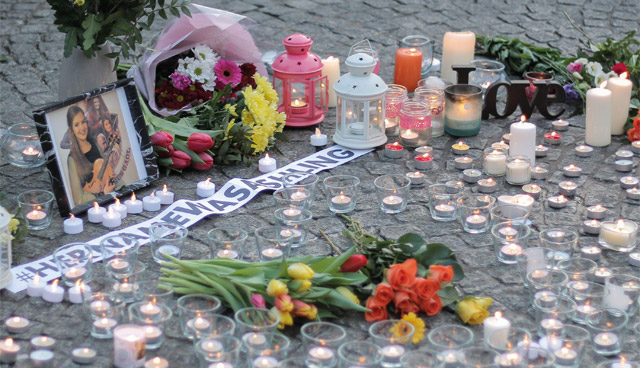‘Appalling’ murder rate of women in Northern Ireland

Northern Ireland has the joint highest rate in Europe of women killed as a result of domestic violence but remains the only part of the UK which does not have a law criminalising the use of coercive control on a partner.
The murder of 23-year-old Ashling Murphy, attacked and killed while out for a run close to her home in Tullamore, brought a fresh focus to the blatant truth of the all-too-common prevalence of violence against women and girls in Ireland.
The young teacher’s death prompted vigils across the island and a reaction from civic and political leaders north and south, with the Taoiseach Micheál Martin stating that the Irish Government will be producing a national strategy for “zero tolerance” for violence against women.
Ms Murphy’s death came just weeks after the murder of mother-of-four Caoimhe Morgan at her home in north Belfast, one of 12 women killed in Northern Ireland since the beginning of the pandemic.
The most recent statistics show that Northern Ireland faces an endemic in relation to female murders, with more women per capita murdered in Northern Ireland as a result of domestic violence than any other part of western Europe. In Europe, the murder rate of women subjected to domestic violence is joint highest in Northern Ireland and Romania.
Additionally, instances of domestic violence, mostly related to violence committed against women, are rising significantly in Northern Ireland. Latest PSNI figures show that it received reports of almost 2,000 domestic abuse incidents between 14 December 2021 and 1 January 2022, a 12 per cent increase on the same period the year before.
The rise is consistent with annual figures, which show that in the 12 months from October 1, 2019, to September 30, 2020, there were 32,015 domestic abuse incidents recorded by the PSNI, meaning domestic abuse incidents now account for almost 20 per cent of all police-recorded crime.
“Latest PSNI figures show that it received reports of almost 2,000 domestic abuse incidents between 14 December 2021 and 1 January 2022, a 12 per cent increase on the same period the year before.”
Then First Minister Paul Givan MLA and deputy First Minister Michelle O’Neill MLA, responding to a written question by Foyle MLA Sinéad McLaughlin on how the statistics will inform OFMDFM’s work on its strategy addressing violence against women and girls, said that alongside the seven-year Domestic Violence and Sexual Abuse Strategy published by the departments of Health and Justice in 2019, work has started on a Strategy to Tackle Violence Against Women and Girls, focused on early intervention to tackle “the root causes of this scourge and responsive services that will ensure women and girls are equally safe here”.
Justice Minister Naomi Long MLA said that number of people both suffering from, and killed as a result of, domestic abuse “is of genuine concern”. Long said that as part of the Domestic Abuse and Civil Proceedings Act (Northern Ireland) 2021, a new domestic abuse offence will be introduced next year that will capture patterns of non-physical abusive behaviour, including controlling and coercive behaviour, by a partner, ex-partner, or close family member. It will also include behaviour that is physically violent, threatening or intimidating.





